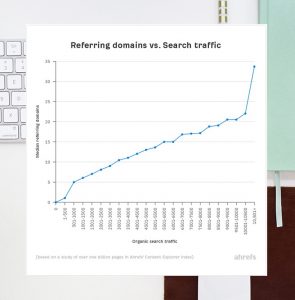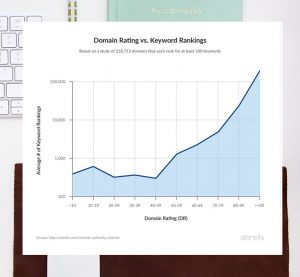M1- Everything you need to know about backlinks
What you will learn: What backlinks are, how they help drive traffic to your site and how to discover backlinks pointing to your site.
Task: Check, and record, the number of dofollow links to your site
Tools: Linkchecker, Spyfu
Time: xx minutes to read the module and xx minutes to do the tasks

Before we begin
Here are a few points on how to use this course:
‣ This course consists of 3 modules. Each module depends on material learned in previous courses, so I recommend doing them sequentially
‣ The quiz was carefully constructed to reinforce your knowledge of key points. You will learn easier and faster if you take it.
‣ The quiz was made in Google Forms, so you can see the correct answers after you complete the quiz. If you don’t know the answers, try and resist the temptation to peek. You will learn much better this way.
‣ The Tasks are where you do the actual work to drive more traffic to your website. You will be prompted to submit the more pertinent ones to Mary Clare for review and suggestions. Take advantage of it! That is what sets this course apart from other SEO courses on the internet- there is a real live SEO expert with 15 years of experience here to help you.
‣ The course comes with a free voucher for a live call with Mary Clare to help: it is good for 30 minutes. If you get stuck or confused, use it! This is done by booking a call using this link: Mary Clare’s Schedule. If you need a little extra hand holding, you can also purchase additional credits of her consulting time.
Let’s get started!
Why backlinks are so important
As you learned in the Basic SEO course, one of the primary things Google takes into account is the quality of your website’s content. How does Google determine if your site has high quality content? By looking at web pages that others have found valuable in similar searches. If it sees other websites find your content useful, it ranks your site higher. Other websites signal to Google that your content is useful by linking to it.
To put it another way, if other websites link to a page, the algorithms interpret this to mean that the site is valued and trusted. This is why we want other sites to link back to ours.

Three things to take into consideration when building backlinks
Google’s algorithms considering three key factors when assessing the backlinks to your website:
1– The number of backlinks directed to your site.
2– The number of backlinks from referring domains with 100+ organic visits per month.
3– The domain authority of the referring domains.
Let’s take each of these in turn
Number of backlinks linked to your site
Ahrefs has done a great deal of statistical research examining the effects of backlinks on search rankings. They found that there is a direct correlation between the number of links on other web pages directing to a website and that website’s search ranking.

Interestingly, Google cares more about the link juice of the linking page than that of the linking domain. This means that ideally, you want to target a specific page on a site when asking for a link (more on how to ask for a link in the next module). Often this is not possible- you are often at the mercy of the blog’s editor or the site’s webmaster, who may put a link where it best suits them. If it is possible to choose the specific page, look for one:
- With a high number of external links directed to it, and
- That contains the same key phrase as the page you want it to link to.
About dofollow and no follow links
There are two kinds of links: dofollow and nofollow links. Simply put, nofollow links instruct Google’s search algorithms to disregard them. Or to put it another way, they say, “Hey Google, I put this link on my site to another website, but it does not mean I think that website (web or web page) is a valuable source of information. I can’t vouch for it.”
Back in the old days of SEO, you could comment on people’s blog posts, link back to your site and have that count as a backlink. Google created nofollow links to cut down on these kinds of spammy links.
Many social media sites also use a lot of nofollow links. A great example of this is LinkedIn’s company pages- most of those links are nofollow links. In fact, LinkedIn does not even allow Google to crawl most of the content on company pages. They do this to keep traffic on their own site and to direct traffic to incentivize people to publish LinkedIn articles, which they allow Google to crawl.
Outbound links on these popular websites are also nofollow:
- Quora
- YouTube
- Wikipedia
- Medium
- Huffington Post
You want to make sure that the backlinks directed to your site are dofollow links. This is particularly true if you only have a link or two on a website.
Video: How to determine if a link is dofollow or nofollow
Tool: Inbound link checker
Video: How to determine the number of backlinks to your site

Task: Install the tool inbound link checker and use it to check the number of dofollow backlinks to your site. Make a record of this number.
Backlinks from referring domains with 100+ organic visits per month
According to the Ahrefs research we mentioned above, the second most important external SEO factor that affects your site’s search ranking is the number of domains that get 100+ organic visits per month.
It may sound like a lot if you are just starting out with SEO, but 100 organic hits per month is not very many. Which is good news for you if you are building backlinks because when you ask blog editors and webmasters for backlinks, you can cast your net pretty wide and still be effective. Just focus on sites that get more than 100 visits per month.
Site with more search traffic than this do give you link juice, but they don’t give a material increase in traffic compared to the sites with just 100 hits per month.
Tool: Spyfu
If you took the Basic SEO Course, you are already familiar with Spyfu. It tells you how much traffic a website gets each month. If not, here is a video showing how to use it.
Video: How to determine a website’s monthly traffic
Domain authority
The third most important external SEO factor that determines how your site will rank in SERPs is domain authority. This is also referred to as domain ranking or url rating.
Ideally, backlinks should come from sites that demonstrate “expertise, authoritativeness and trustworthiness.”

As we saw in the above video, we can use our new Inbound Link Checker tool to determine the domain value of a site. In general, the higher the value the better. However, this is only true for sites with very high domain authority. Sites with low to medium domain authority don’t contribute nearly as much to search rankings.

How to create a backlink plan
Your goal is to create a strategy to get more backlinks to your site.
In the next module, we will do two things:
- Learn how to get backlink opportunities
- Leverage the above information to create a backlink building strategy.
Takeaways
- Backlinks are the key component of external SEO. They are links from other websites to yours.
- The more links you have to your site, the better. This is the number one factor affecting your external SEO.
- Links from sites with 100+ monthly organic hits are even better.
- Links from sites with very high domain authority can help you supercharge your external SEO.
